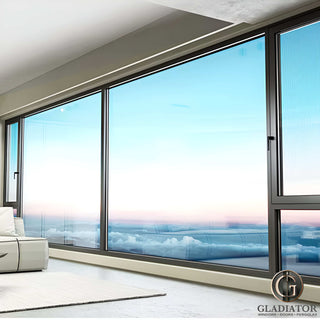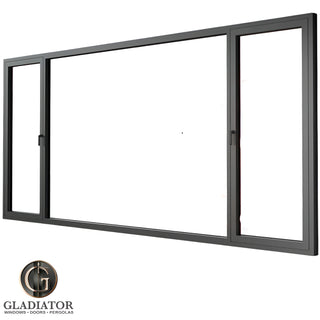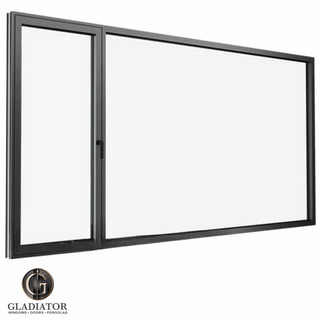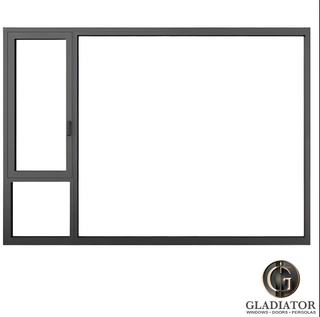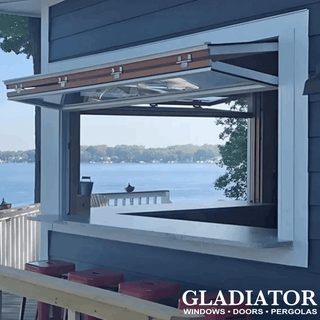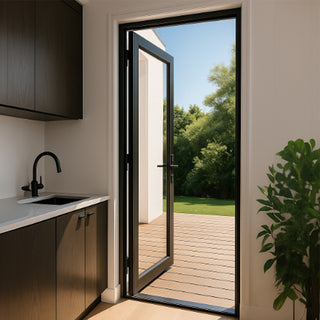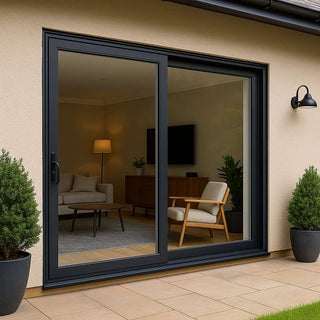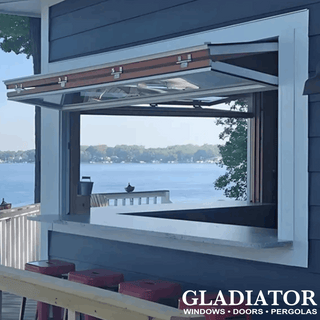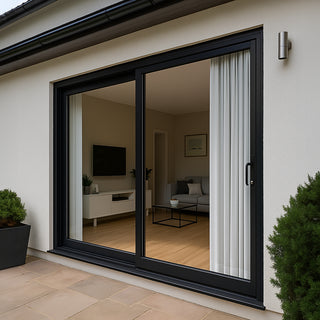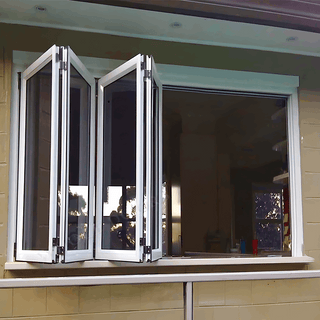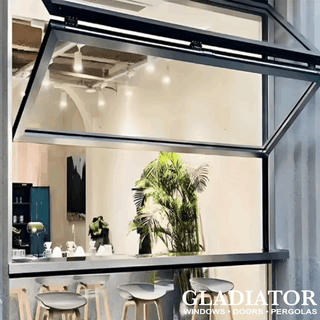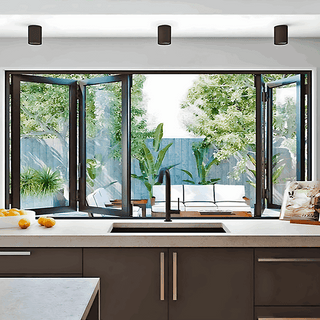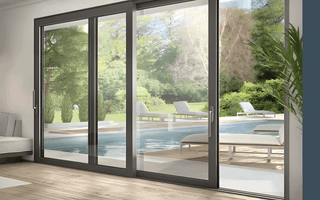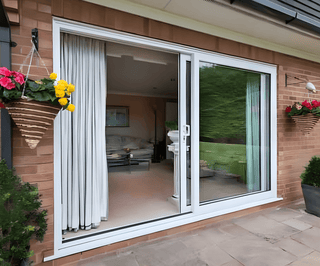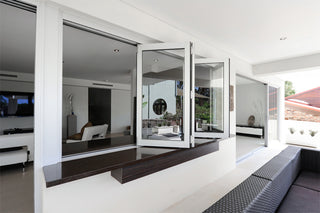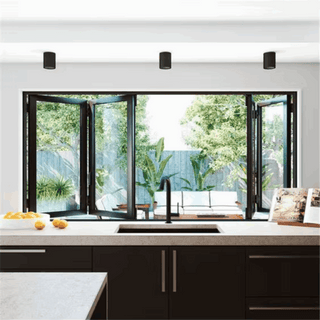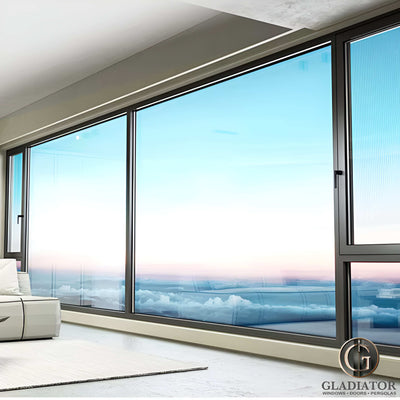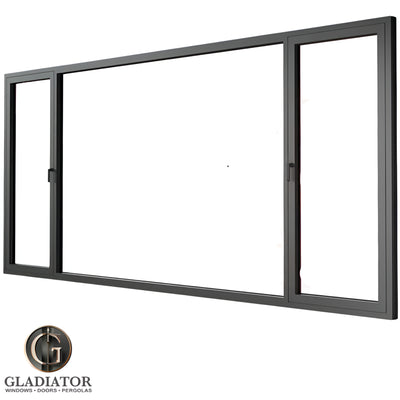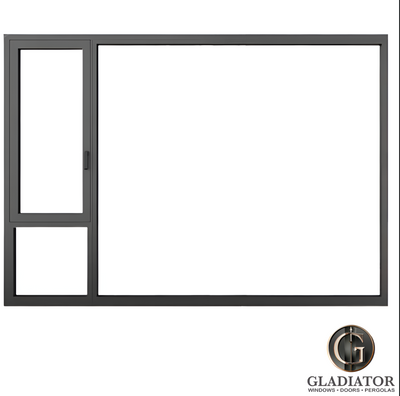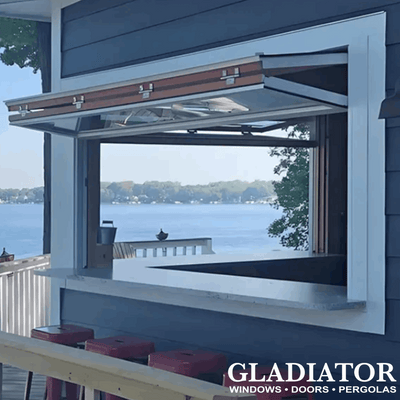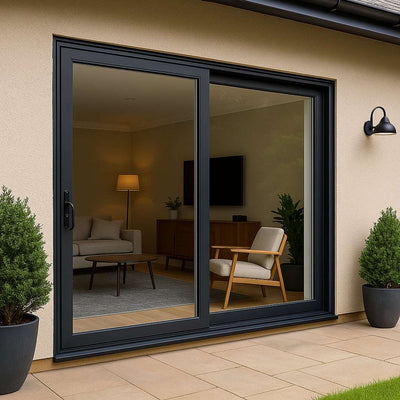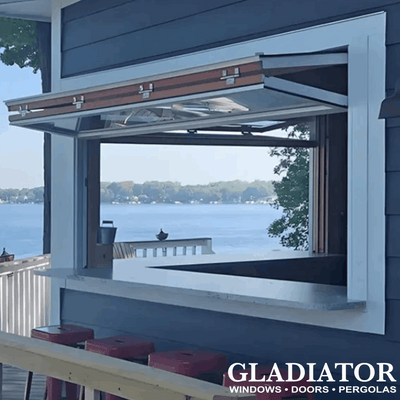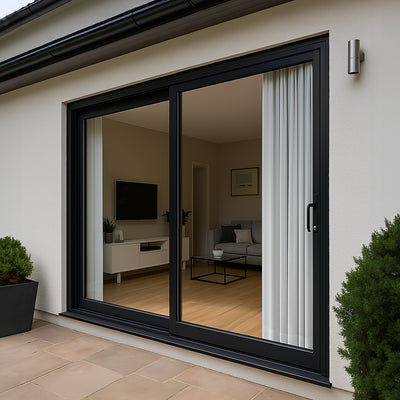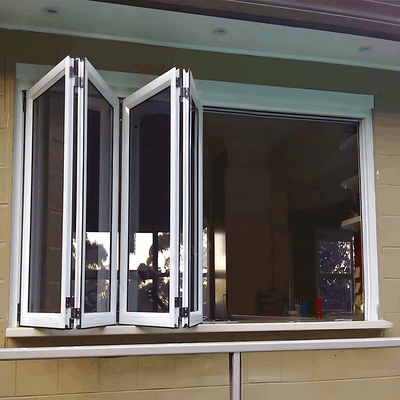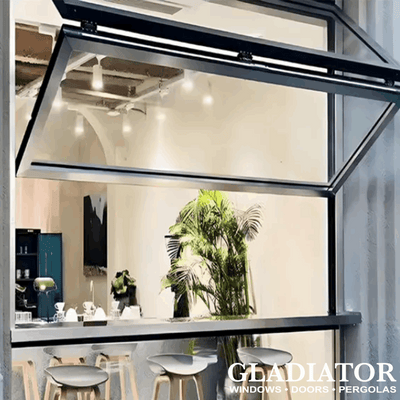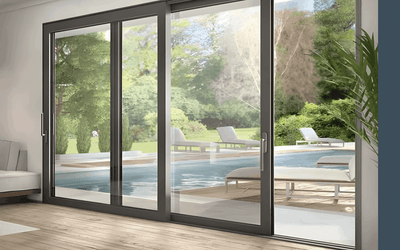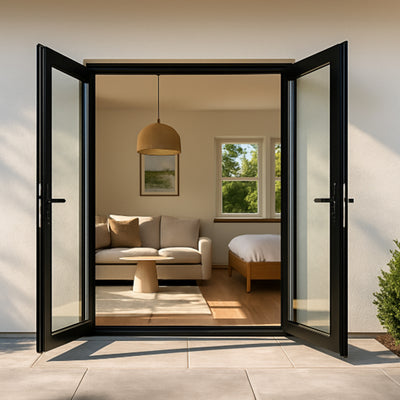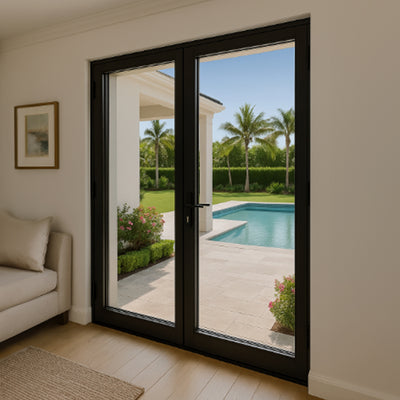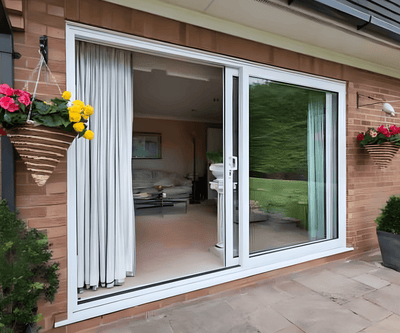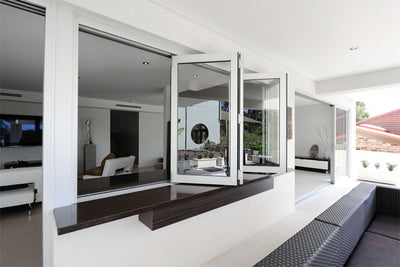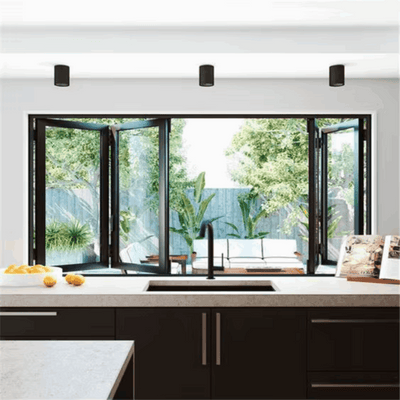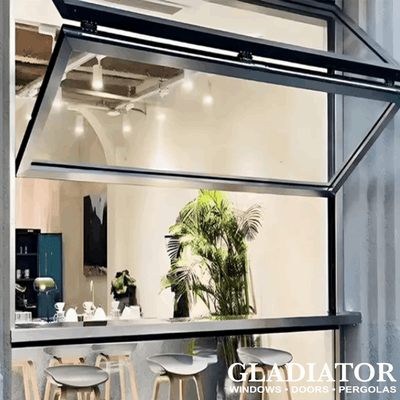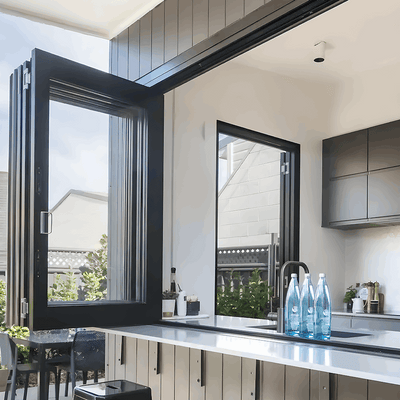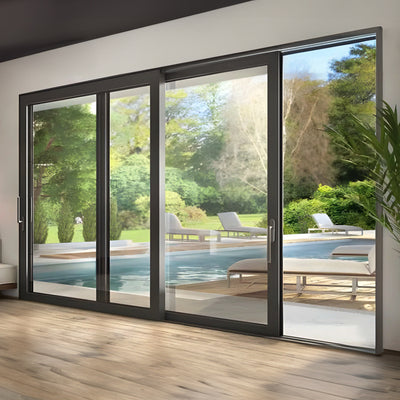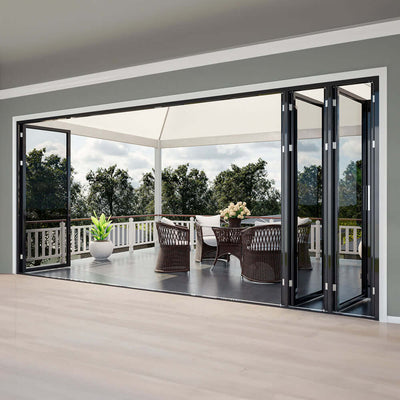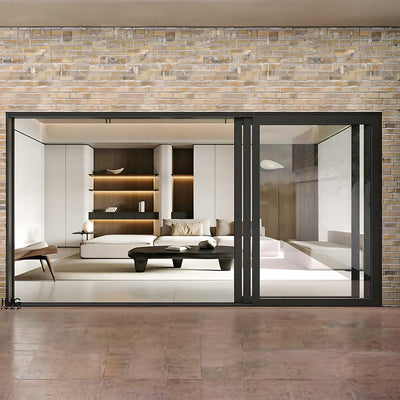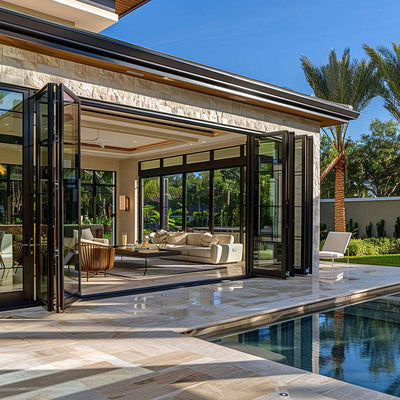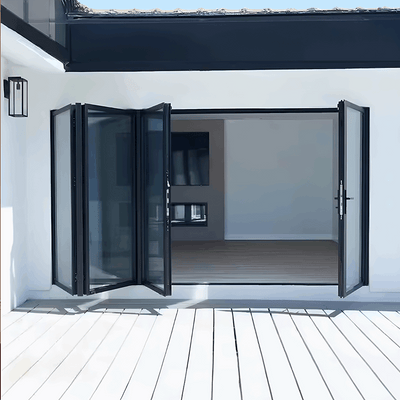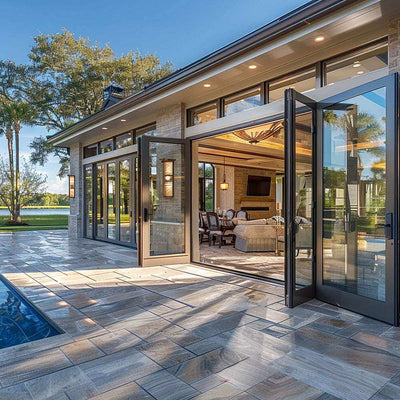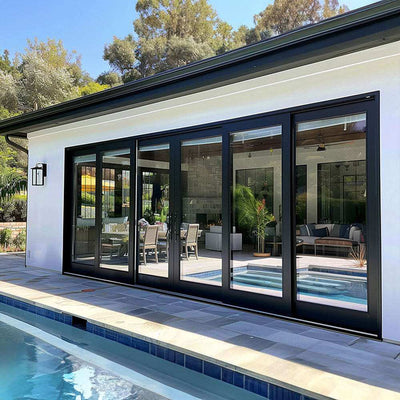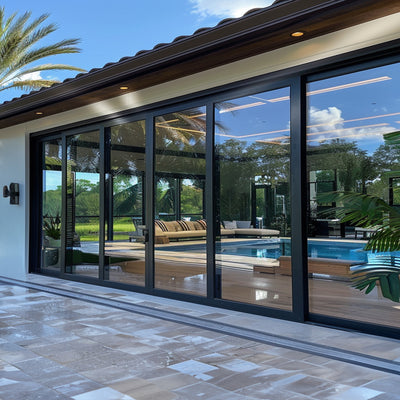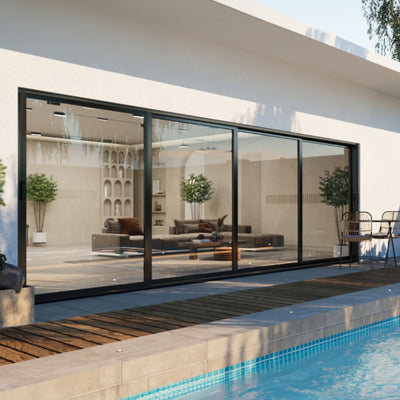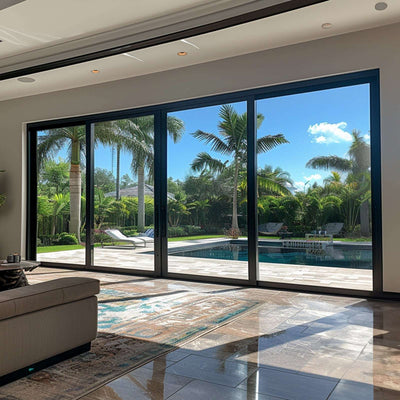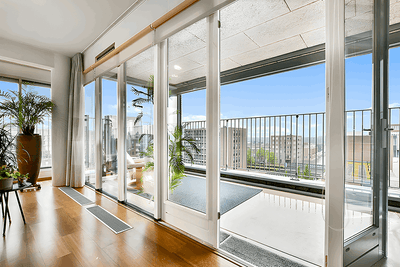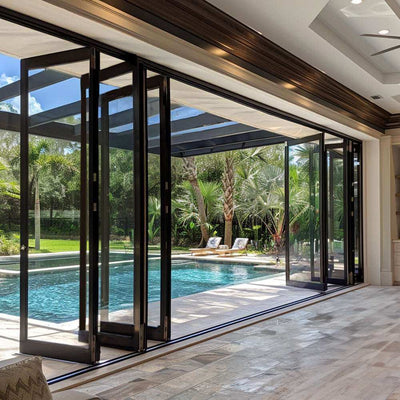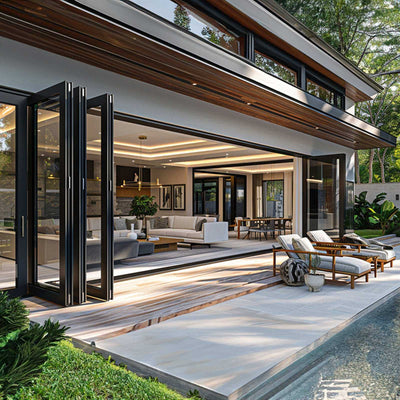Beyond The Hype: What Energy Efficiency Really Means
Imagine your neighbor bragging about their "energy-efficient" patio doors and the hundreds they've saved on heating, while a friend with a similar upgrade isn't seeing the same results. This difference highlights why it’s important to understand what really makes a patio door energy efficient. It's not just marketing speak; it's about transforming your door from an energy sieve into a strong barrier that maintains your home's comfortable temperature. Think of it like swapping a thin windbreaker for a warm, insulated winter coat.
This improved performance has real-world benefits. Picture a Minnesota family finally escaping persistent drafts, or an Arizona family enjoying lower air conditioning bills. These examples demonstrate the potential of energy-efficient patio doors. Plus, the growing demand for these solutions shows a global shift towards energy awareness. For example, the market for energy-efficient sliding doors, including patio doors, is projected to grow from $1.663 billion in 2024 to about $3.425 billion by 2031. This significant growth underlines the increasing importance of energy-saving solutions in the door market. Discover more insights
Decoding Energy Ratings: Focusing On What Matters
Understanding energy ratings can feel confusing. Terms like U-factor, SHGC, and air leakage might sound complicated. But grasping these concepts is key to making informed choices. For long-term success with your energy-efficient patio doors, consider these patio door maintenance tips. This helps you move past the marketing and focus on what actually affects your comfort and energy bills.
For instance, the U-factor measures how well a door prevents heat transfer. Think of it like a car’s MPG – the lower the number, the better the insulation. Likewise, the Solar Heat Gain Coefficient (SHGC) tells you how much solar heat passes through the door. A lower SHGC is good in hot climates to prevent overheating. You might be interested in: Upgrade Today: Energy-Efficient Window Replacement Solutions
Myths vs. Reality: Separating Fact From Fiction
Many misconceptions exist about energy-efficient patio doors. Some people believe all double-paned doors are created equal, which simply isn’t true. The type of gas fill and low-E coatings significantly impact performance. Another myth is that the priciest door is automatically the best. The ideal door actually depends on your climate, home's direction, and how you live. By understanding these subtleties, you can avoid expensive mistakes and choose a door that truly delivers. This knowledge helps you make smart choices based on your specific needs, not just marketing claims.
The Energy Science That Actually Matters To You
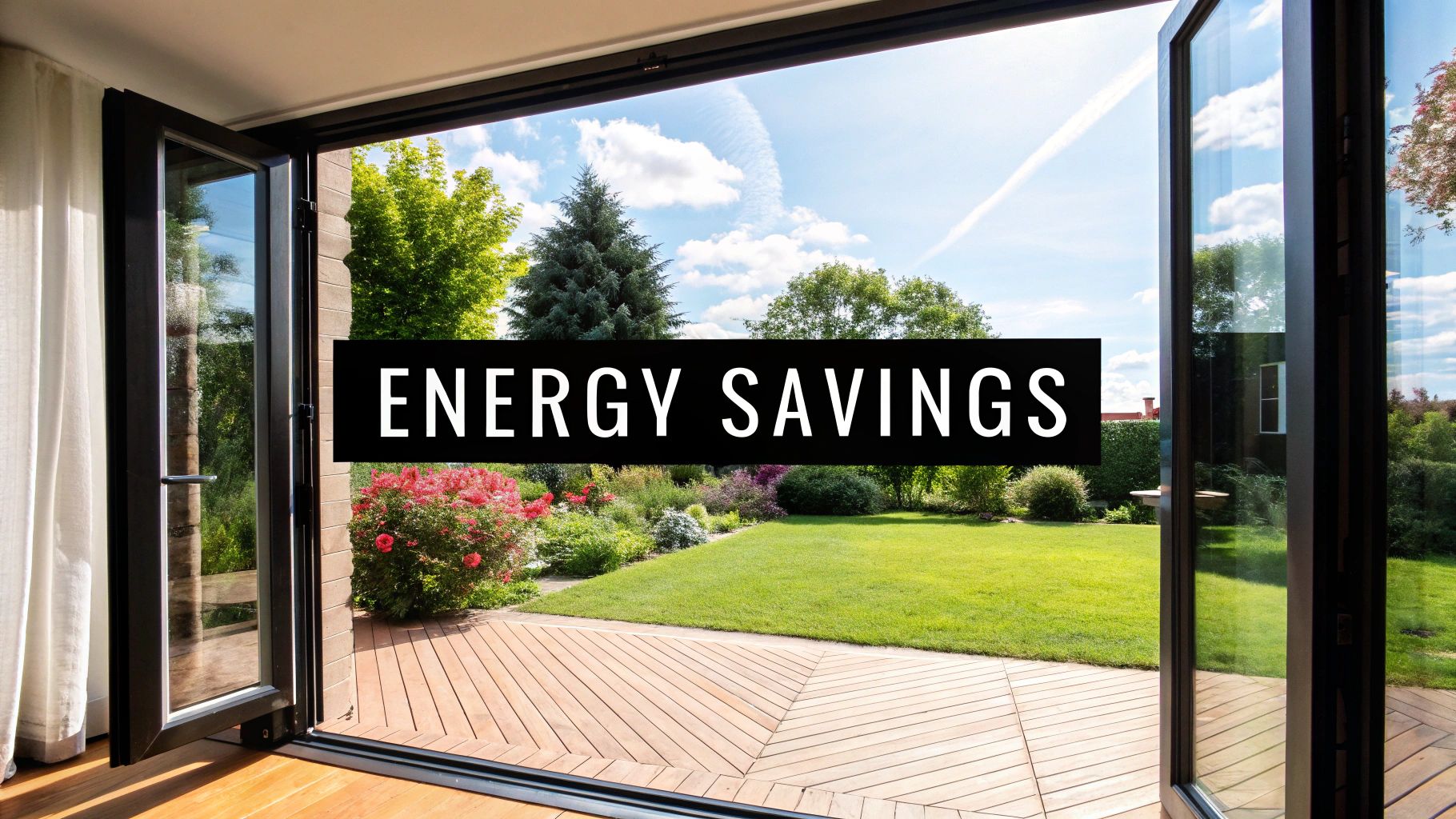
Ever reach for your patio door on a frigid winter day and feel that unwelcome blast of cold? That's your home's energy literally slipping through your fingers. Three key factors contribute to this energy loss: thermal conductivity, air leakage, and solar heat gain. Let's break them down so you can make a truly informed patio door decision.
Thermal Conductivity: Your Door's Winter Coat
Imagine a metal spoon sitting in a steaming mug of hot chocolate. The handle gets hot, right? That's the metal conducting heat. Your patio door works similarly. In winter, the material conducts heat from your warm interior to the cold outdoors. Materials with low thermal conductivity, like vinyl, act like a warm winter coat for your door, slowing down this heat transfer. This is why the material of your door plays such a vital role in its energy efficiency.
Air Leakage: The Silent Energy Thief
Think of air leakage as tiny drafts sneaking around your patio door frame like water seeping through cracks in a dam. These seemingly insignificant gaps allow precious warm air to escape in the winter and cool air to escape during the summer – increasing energy costs and reducing comfort. Proper sealing and weatherstripping are essential to prevent these silent energy thieves. A quality installation ensures a tight seal, maximizing your door's efficiency.
Solar Heat Gain: The Summer Sun
Picture your car parked on a scorching summer day. The interior becomes an oven, trapping the sun's heat. This is solar heat gain in action. Your patio door can have a similar effect, allowing sunlight to pour in and warm up your home. While welcome in the winter, this can lead to soaring cooling costs in the summer. Features like tinted or reflective glass can help manage this solar heat, keeping your home comfortable and energy bills in check. For more window efficiency tips, check out this resource: 8 Tips How to Make Windows More Energy-Efficient in 2025
Decoding Energy Ratings: Understanding the Numbers
Two critical ratings to understand when shopping for energy-efficient patio doors are U-factor and SHGC. Think of the U-factor as the miles-per-gallon rating for your door. The lower the U-factor, the less heat transfer and the better the insulation. The Solar Heat Gain Coefficient (SHGC) measures how much solar heat passes through the door. A lower SHGC means less heat enters your home, keeping it cooler in the summer.
To help you visualize the impact of these ratings, let's look at a comparison of different door types.
The table below, "Energy Performance Ratings Comparison", provides a side-by-side view of key energy metrics – U-factor, SHGC, and Air Leakage – for various door types and materials. This comparison also includes climate suitability recommendations, guiding you towards the best choice for your specific needs.
| Door Type | U-Factor | SHGC | Air Leakage | Climate Suitability |
|---|---|---|---|---|
| Vinyl Sliding | 0.30 | 0.25 | Low | Cold & Moderate |
| Wood Clad | 0.28 | 0.27 | Medium | Moderate |
| Aluminum Clad | 0.25 | 0.20 | Low | Hot & Moderate |
| Fiberglass | 0.22 | 0.18 | Very Low | All Climates |
As the table illustrates, fiberglass doors offer exceptional performance across all metrics, making them suitable for a wide range of climates. Vinyl provides excellent insulation (low U-factor) ideal for colder regions, while aluminum clad excels in hot climates due to its low SHGC. Choosing the right door based on these ratings can significantly impact your home's energy efficiency and comfort.
Choosing Materials That Match Your Real Life
Picking the right material for your energy-efficient patio doors isn't just a detail; it's a big decision. Think of it like choosing a car – a sporty convertible, a rugged truck, or a dependable minivan. Each material has its own "personality" and will perform differently over time. Choosing poorly can lead to headaches down the road. Let's explore the options, not with technical jargon, but with real-world practicality.
Vinyl: The Low-Maintenance Marvel
Vinyl patio doors are the superheroes of low-maintenance living. They offer great insulation, never need painting, and shrug off harsh weather like it's nothing. Picture that reliable family minivan – always gets you where you need to go without much fuss. For busy homeowners, vinyl is a lifesaver. We recently worked with a couple who told us they’d practically forgotten they even had patio doors to maintain!
Wood: The Timeless Elegance
Wood patio doors bring a warm, natural beauty to any home. They offer solid performance, too. But like a vintage sports car, they require regular care and attention. Think of those weekend car washes and tune-ups. A family we know chose wood doors and now enjoys their Saturday morning maintenance ritual, seeing it as a way to connect with their home. This dedication keeps their doors looking beautiful and functioning smoothly.
Aluminum: The Strength and Security Champ
Aluminum patio doors are known for their incredible strength. But they can also conduct heat and cold easily, almost like a metal bridge on a scorching summer day or a frigid winter night. This is where thermal breaks come into play. Imagine insulating that metal bridge – that's what thermal breaks do. They disrupt the flow of temperature, significantly boosting energy efficiency. Aluminum is a great choice for homeowners prioritizing security and durability.
Fiberglass: The Premium Performer
Fiberglass patio doors are like the high-performance hybrid car – combining the best features of other materials. They offer excellent insulation, durability, and low maintenance. But like a high-end vehicle, they come with a higher initial price tag.
Before we go any further, let's look at a handy comparison of these different materials. The table below breaks down the key factors to consider:
Patio Door Materials Comparison
Comprehensive comparison of material options including energy performance, maintenance, cost, and longevity factors
| Material | Energy Efficiency | Maintenance Level | Initial Cost | Lifespan | Best Climate |
|---|---|---|---|---|---|
| Vinyl | Excellent | Low | Low to Moderate | 20-40 years | Moderate |
| Wood | Good | High | Moderate to High | 30-50 years | Moderate |
| Aluminum | Good with Thermal Breaks | Low | Moderate | 50+ years | Varies |
| Fiberglass | Excellent | Low | High | 50+ years | Varies |
As you can see, each material has its own strengths and weaknesses. Choosing the right one depends on your specific needs and priorities.
The infographic below visually demonstrates the thermal performance, measured by U-value, of different patio door materials. A lower U-value indicates better insulation.
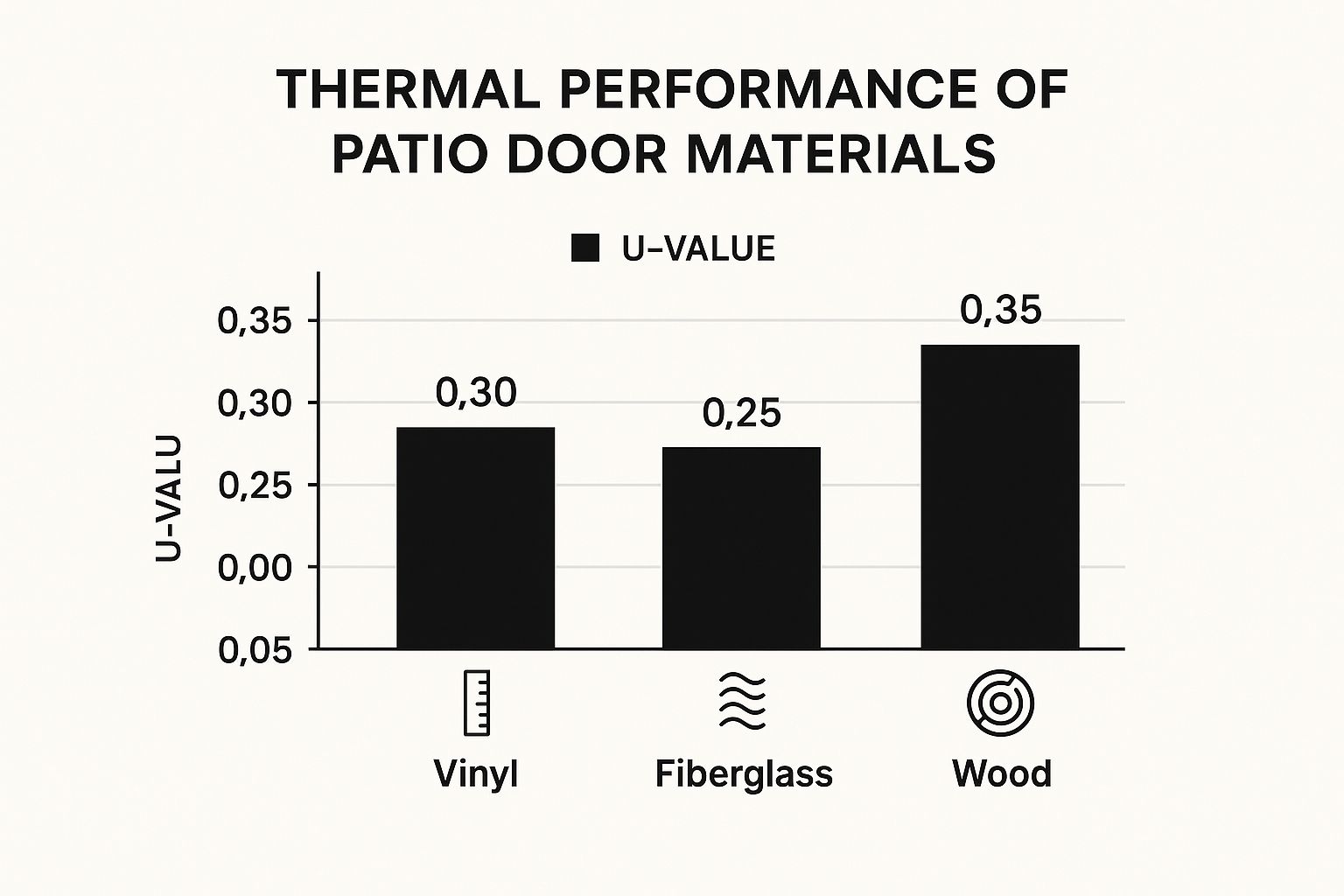
Fiberglass boasts the lowest U-value at 0.25, followed by vinyl at 0.30 and wood at 0.35. Want to explore different patio door styles? Check out our guide: Sliding Glass Doors vs. Folding Doors: The Ultimate Guide to Choosing the Best Patio Door in 2025.
Choosing the perfect patio door material is all about understanding your lifestyle, budget, and local climate. Are you a busy professional who values low maintenance? Or do you cherish the natural elegance of wood? By considering these factors, you can choose a patio door that you’ll love for years to come.
Smart Money Decisions: Investment Analysis That Works
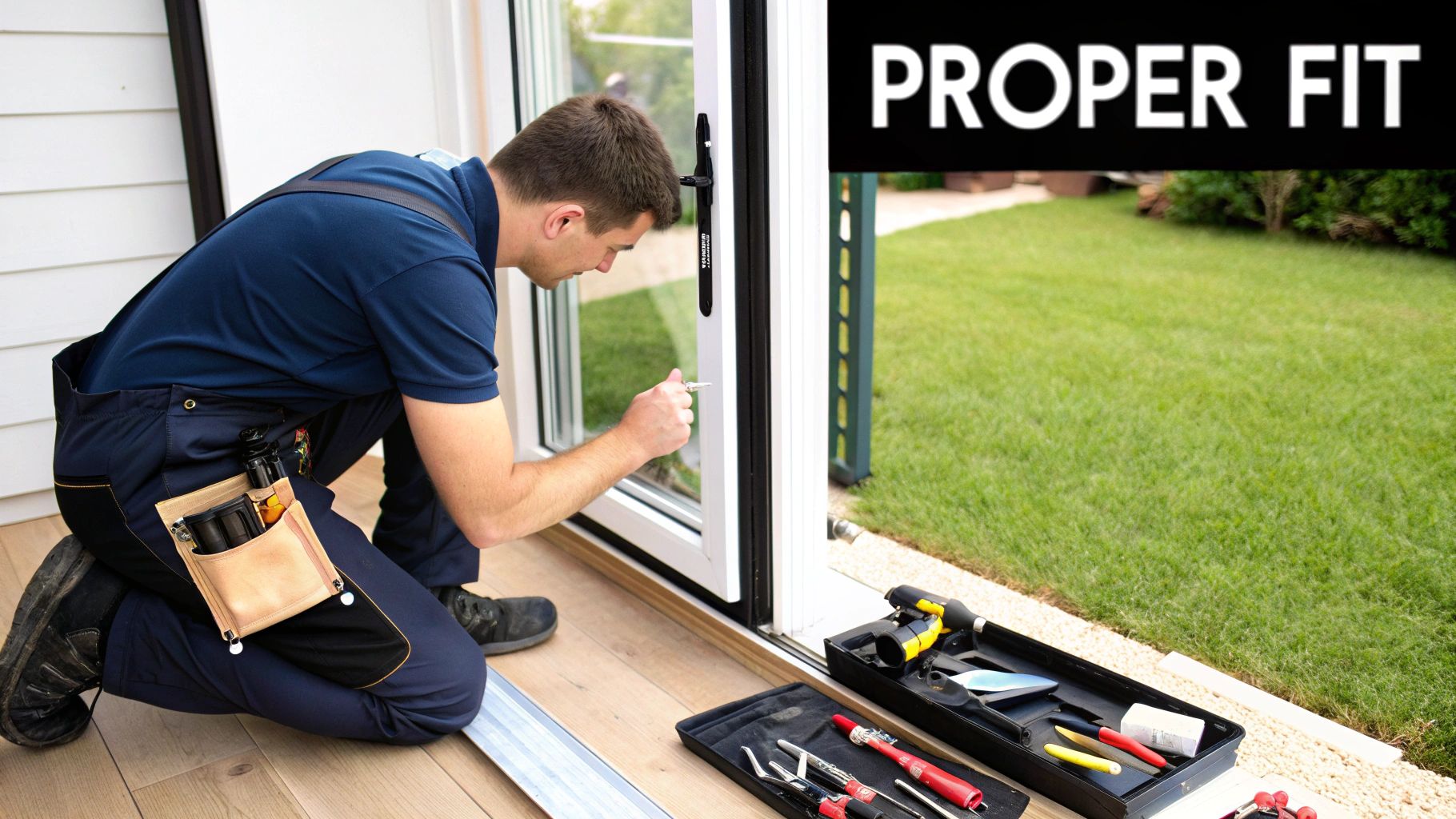
Let's talk about energy-efficient patio doors. They're a big purchase, kind of like buying a new car. But unlike a car that loses value over time, these doors can actually give you money back through energy savings. Think of it this way: you're not just buying a door; you're investing in a more comfortable home and smaller utility bills down the road.
Calculating Your Return: More Than Just the Sticker Price
Figuring out the true value of this investment means looking beyond the initial price tag. It's similar to how you'd evaluate a stock – you wouldn't just look at the current share price, right? You’d consider its potential for growth. With patio doors, that means thinking about the quality of the installation, potential maintenance costs, and how long the doors are expected to last. A top-of-the-line door installed poorly could end up being more expensive over time than a moderately priced door installed by an expert.
For instance, a homeowner in Chicago expected their energy-efficient patio doors to pay for themselves in 7 years. Because they did their research and focused on quality installation, they actually saw that return in just 5 years. This shows how smart planning can make a real difference. You might find this helpful: Comprehensive Guide to Sliding Glass Door Costs in 2025
The Payback Period: How Long Until You See Savings?
To calculate your payback period, estimate your yearly energy savings and divide that by the total project cost. This gives you a realistic timeline for when you'll recoup your initial investment. But remember, energy savings aren't the only benefit! Increased comfort, less noise, and a higher home value all add to your return, even if those benefits don't directly appear on your utility bill.
Take a couple in Florida who mainly wanted a more comfortable home. They installed energy-efficient patio doors to combat the Florida heat. While saving energy was a secondary goal, they were surprised by how much their cooling costs dropped. This illustrates the extra value that often comes with energy-efficient upgrades.
Incentives and Rebates: Making Your Investment Even Smarter
Finding your way through rebates and tax incentives can be confusing. It's like trying to navigate a complicated map – it's easy to get turned around! But spending some time understanding available programs can significantly lower your upfront costs. Some programs offer rebates based on energy performance ratings, while others give you tax credits for making energy-efficient improvements to your home.
Hidden Value: Beyond the Utility Bill
Lower energy bills are a big draw, but energy-efficient patio doors offer other significant advantages. Think of it like buying a well-made piece of furniture. It not only looks great, but it also lasts longer and works better. These doors boost comfort by minimizing drafts and temperature swings, they reduce outside noise, and they can even increase your home's resale value.
These "hidden" benefits contribute significantly to the overall value of your investment. In fact, the growing emphasis on energy efficiency is fueling the residential patio door market. The global market is expected to reach $10.2 billion by 2033, growing at a 4.2% CAGR from 2025 to 2033. Discover more insights.
By considering all of these factors, you can make a smart investment in energy-efficient patio doors that will benefit you for years to come. It's about seeing the big picture and making choices that fit your long-term goals.
Your Personal Selection Strategy: Finding The Perfect Match
Choosing energy-efficient patio doors is a significant investment. It's like choosing the right pair of shoes – they need to fit your lifestyle, your budget, and, of course, your feet (or in this case, your home). This section will guide you through creating a personalized selection strategy to ensure you find the perfect fit.
Assessing Your Current Situation: The Starting Point
First, take a good look at your existing patio door. Feel any drafts sneaking in? Notice any condensation, especially during colder months? Is the area around the door noticeably colder or warmer than the rest of the room? These are all signs that your current door isn't performing as well as it could be, and you're likely losing energy (and money). This initial assessment helps you understand what improvements you need.
Home Orientation: Working With the Sun
Next, consider your home's orientation relative to the sun. A south-facing door will get a lot more sun than a north-facing one. This impacts your choice of glazing. For south-facing doors, you might want low-E coatings and tints to reduce solar heat gain during the summer. North-facing doors, on the other hand, might prioritize maximizing natural light and minimizing heat loss during winter. Thinking about these factors helps you choose the right features for your specific situation.
Lifestyle and Needs: Making It Personal
How do you plan to use your patio? Frequent entertaining might call for easy access and wide openings. Children or pets? Safety features become a priority. Consider your family's lifestyle and how the door will be used daily. A family with young children might prioritize tempered glass and child-proof locks, while retirees might focus on easy operation and low maintenance. Identifying these priorities ensures your new door fits seamlessly into your life.
Budget: Balancing Cost and Value
Setting a realistic budget is essential. Remember, the cheapest option isn’t always the best in the long run. Think about the total cost, including installation, and factor in potential long-term savings from increased energy efficiency. It's similar to buying a car – you'd consider fuel efficiency and maintenance costs, not just the sticker price. A good way to evaluate this is to consider working with a qualified Shopify marketing agency to weigh upfront costs against long-term benefits. Finding the right balance between affordability and quality ensures a wise investment. Interestingly, the architectural patio doors market, which includes energy-efficient models, is estimated to be worth around $15 billion in 2025 and projected to grow at a 6% CAGR after that. Learn more about architectural patio doors.
Measurement and Configuration: Getting it Right
Accurate measurements are crucial. Incorrect sizing can lead to installation headaches and reduced energy efficiency. Measure carefully, considering both the rough opening (the structural opening in your wall) and the door’s actual dimensions. Also, think about whether a single or double door configuration best suits your space and needs. A single door maximizes glass area, while double doors provide wider access. The right configuration impacts both function and appearance.
Glazing Options: Understanding the Details
Don't let technical jargon overwhelm you. Focus on key performance features like U-factor, SHGC (Solar Heat Gain Coefficient), and air leakage ratings. Think of U-factor like insulation for your windows – a lower number means better insulation. SHGC measures how much solar heat the door lets in – a lower number is good for hot climates. The air leakage rating tells you how well the door seals against drafts. Understanding these simple concepts empowers you to choose the right glazing options.
Checklist for Success: Covering All the Bases
Use this checklist to ensure you've considered all the important factors:
- Energy Performance: U-factor, SHGC, and air leakage ratings
- Material: Vinyl, wood, aluminum, fiberglass
- Style: Sliding, French, hinged
- Size and Configuration: Single or double door
- Hardware and Features: Locks, handles, screens
- Installation: Professional installation is recommended
- Warranty: Look for comprehensive coverage
- Budget: Balance cost with long-term value
- Architectural Compatibility: Make sure the door complements your home's style
By following this personalized selection strategy, you'll be well-prepared to choose energy-efficient patio doors that enhance your home’s comfort, beauty, and value for years to come.
Installation Excellence: Protecting Your Investment From Day One

The Department of Energy highlights key areas in this screenshot, showing just how much energy efficiency depends on the whole door. Notice how things like weatherstripping, the type of glass, and even how the frame is built are all important pieces of the puzzle. This reminds us that even the best patio doors need to be installed correctly to really deliver on their energy-saving promise.
Think about it like setting up a high-powered telescope. You could have the best lenses money can buy, but if the mount is shaky and poorly aligned, you're not going to get a clear view of the stars. The same goes for energy-efficient patio doors. A shoddy installation can undermine even the most advanced technology. Proper installation is the bedrock of energy efficiency and long-lasting performance. This section will help you understand what a good installation looks like and avoid costly mistakes.
Hallmarks of Quality Installation: Spotting the Difference
A well-installed door is like a perfectly sealed envelope, protecting your home from the elements. Weatherization is key. This means creating a tight seal against air and water leaks. For example, high-quality expanding foam sealant fills any gaps around the frame, preventing drafts and moisture problems. This meticulous sealing is vital for top-notch energy performance.
Flashing is another crucial detail. Think of it as a miniature roof over your door, diverting water away from the frame. Properly installed flashing prevents water damage, extending the life of your patio doors. It's a small thing that makes a big difference.
Recognizing a True Craftsman: Attention to Detail
Professional installers understand the significance of these seemingly minor details. They're like skilled surgeons, precise with every cut and stitch. They’ll carefully inspect the rough opening, making sure it's square and plumb. They’ll also shim the frame meticulously for a level and stable base. These careful practices are what set true professionals apart.
Asking the Right Questions: Empowering Yourself
Don't hesitate to ask contractors about their experience installing energy-efficient patio doors. Ask for references and look for certifications. A reputable contractor will gladly provide these and answer all your questions. It’s a sign of their professionalism and commitment to quality.
For example, ask about their weatherization techniques, how they handle flashing, and how they ensure a proper seal. These questions help you assess their expertise and spot any potential red flags. Being informed is your best defense against a bad installation.
Protecting Your Investment: The Final Inspection
The final inspection is your last chance to make sure everything is perfect. Check for proper sealing, smooth operation, and secure locking. A good installer will walk you through everything, explaining the details and addressing any remaining questions. This teamwork ensures you're happy with the finished product. By actively participating in the process, you’re protecting your investment and maximizing the benefits of your energy-efficient patio doors for years to come.
Long-Term Success: Maintenance That Actually Works
Your energy-efficient patio doors are designed for the long haul, but like any well-made tool, they need a little TLC to stay in peak condition. Think of it less like complex car maintenance and more like keeping a bicycle running smoothly – a few simple checks and adjustments now and then will keep things rolling for years. We’ve gathered some practical tips from homeowners who have kept their patio doors operating like new for decades.
Seasonal Routines: A Year-Round Approach
Just like a garden needs different care throughout the year, your patio doors benefit from a seasonal maintenance routine.
In spring, it’s all about getting things moving. Check for smooth operation, lubricate the hardware, and make any necessary adjustments to the rollers or tracks. Think of it as a spring tune-up, ensuring your doors are ready for the warmer weather.
Summer is for preventing weather damage. Inspect the weatherstripping for wear and tear – those seals are your first line of defense against the elements. Clear any debris from the tracks to keep things running smoothly during the hottest months.
Fall means getting ready for winter’s chill. Clean and lubricate all moving parts, check for any sneaky air leaks, and make necessary repairs before the cold sets in. This will help your doors keep the warm air in and the cold drafts out. You might be interested in: The Ultimate Guide to Sliding Glass Door Seals: Why They Matter & How to Maintain Them in 2025
Winter is about keeping a watchful eye. Check regularly for condensation, drafts, or any changes in how the door operates. These can be early signs of potential problems that are much easier to address before they become major headaches.
DIY vs. Professional: Knowing Your Limits
Some maintenance tasks are easy DIY projects. Cleaning the weatherstripping and lubricating the hardware is about as simple as changing a lightbulb. However, more complicated repairs like replacing broken rollers or damaged glass are best left to the pros. They have the experience and the right tools to ensure the job is done correctly.
Early Warning Signs: Catching Problems Before They Grow
Just like a doctor can spot the early signs of a problem, you can learn to identify potential issues with your patio doors before they become major expenses. Notice a draft you hadn't felt before? Is the door sticking or harder to open than usual? These seemingly small things can be clues to underlying problems that need attention.
Troubleshooting Common Issues: Practical Solutions
Here’s a quick guide to address some typical patio door issues:
-
Sticking Door: Try lubricating the tracks and rollers first. Also, check for any debris or obstructions that might be getting in the way.
-
Drafts: Inspect and replace any worn weatherstripping. Also, check for gaps around the frame where air might be sneaking through.
-
Difficulty Locking: Sometimes a simple adjustment to the latch or strike plate can solve the problem. Lubricating the locking mechanism can also help.
These simple solutions can often fix common problems quickly and easily. Regular maintenance is the best way to ensure your energy-efficient patio doors perform well for years to come. It's an investment in comfort, energy savings, and the value of your home. Ready to explore your options? Visit Gladiator Window and Doors for a wide selection of high-quality, custom-made doors. We offer the lowest prices in the USA, backed by our Best Offer Guarantee.

















